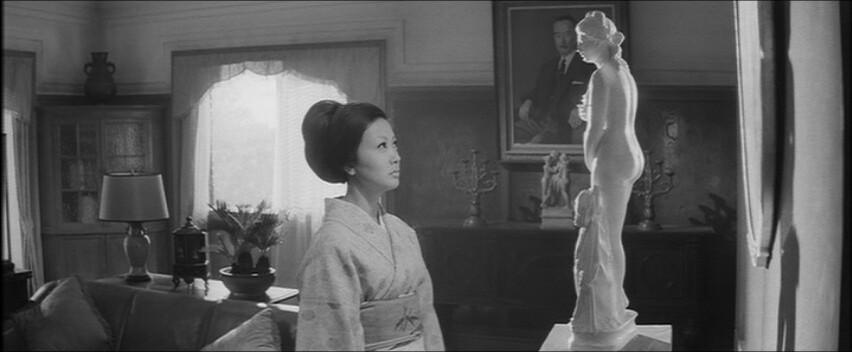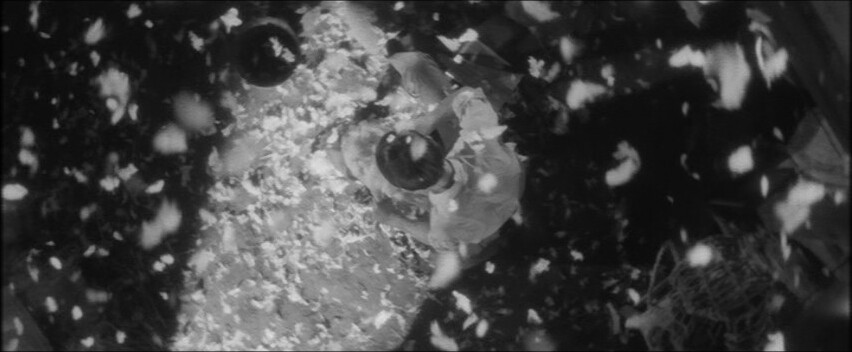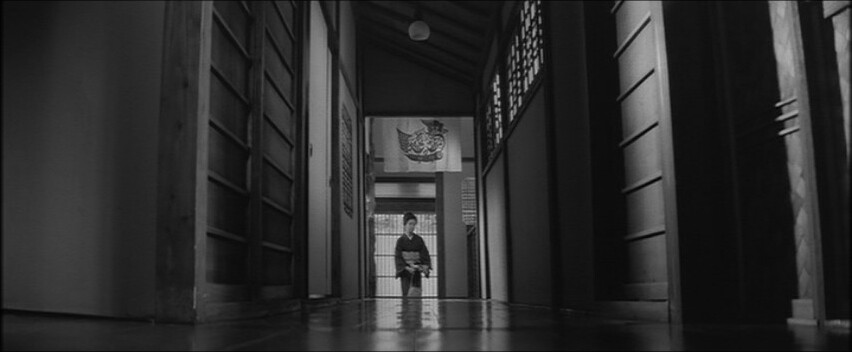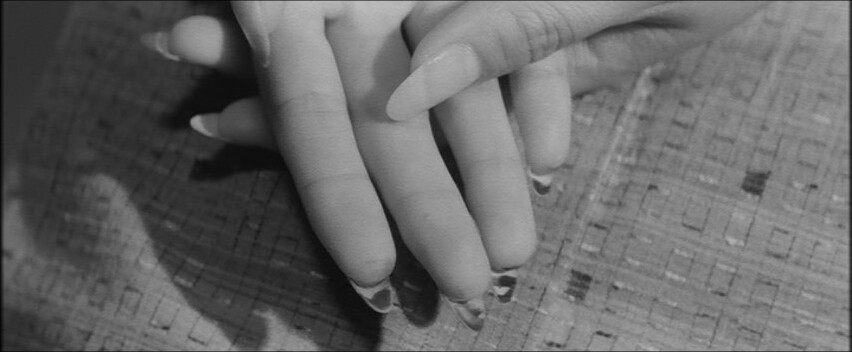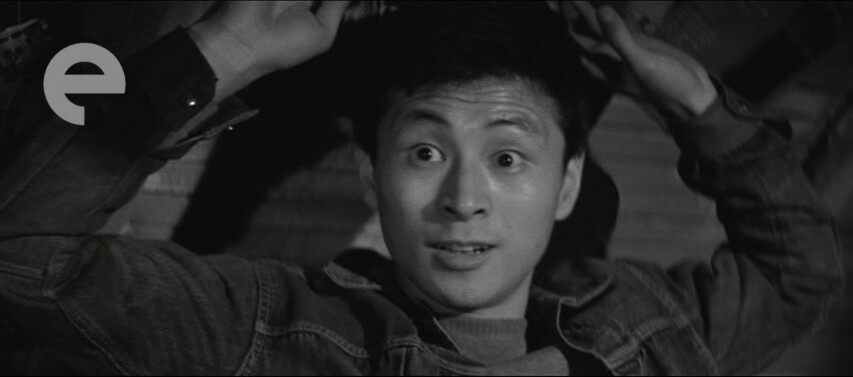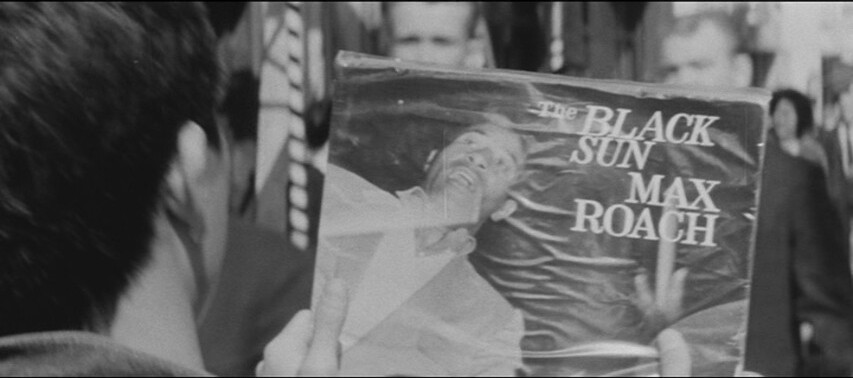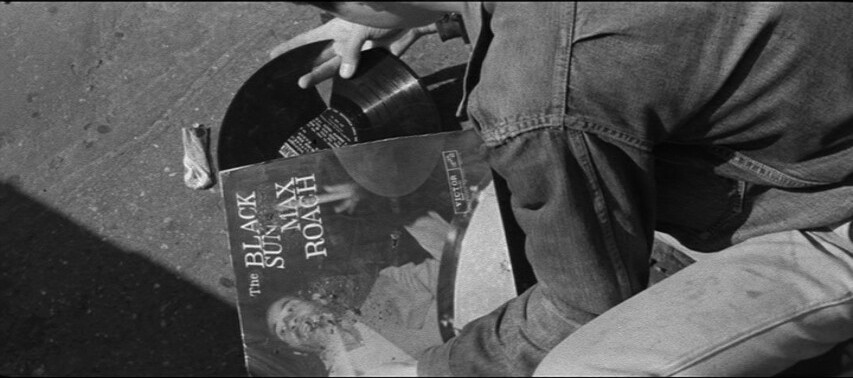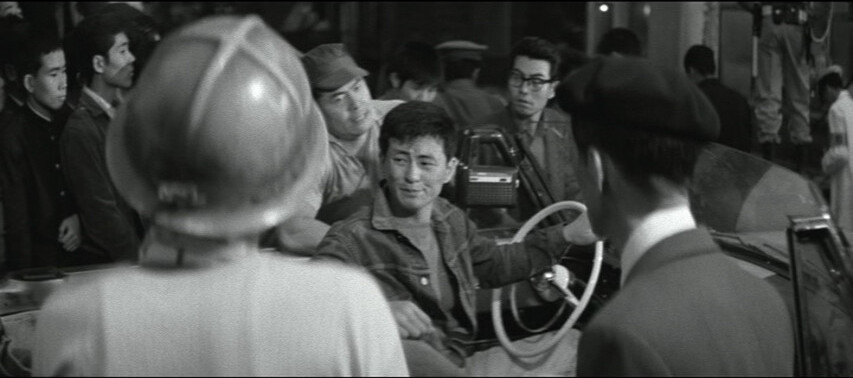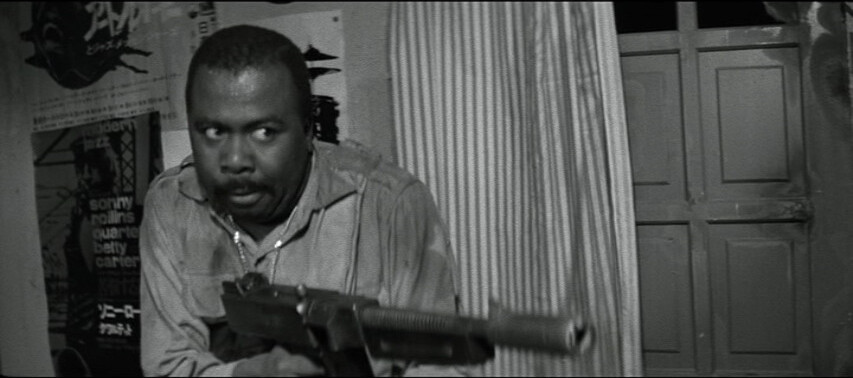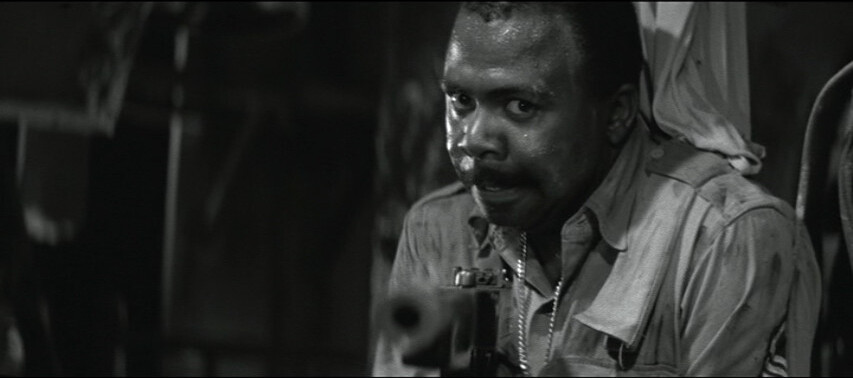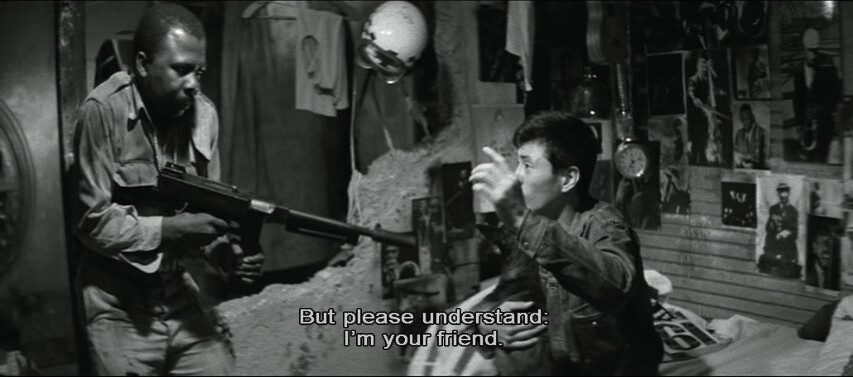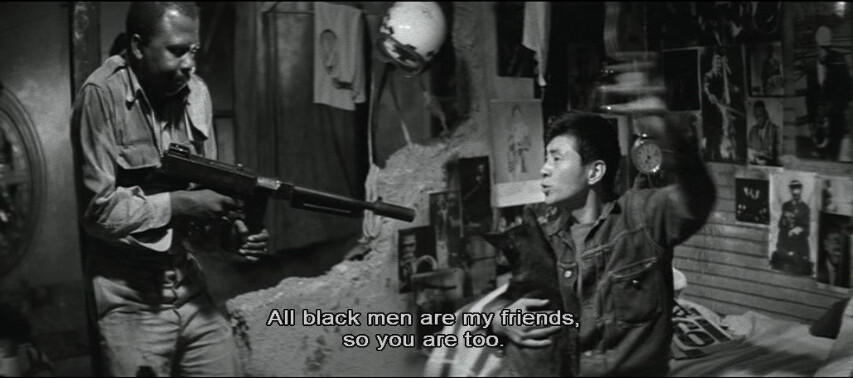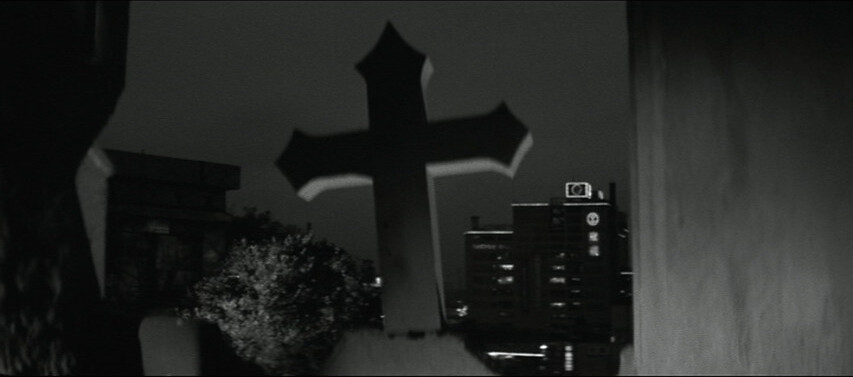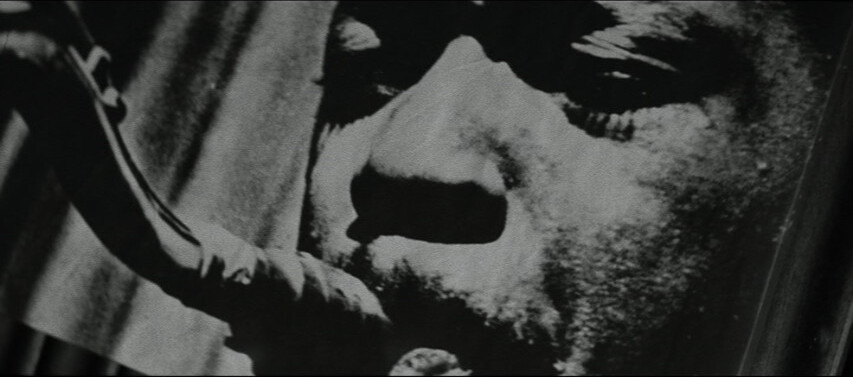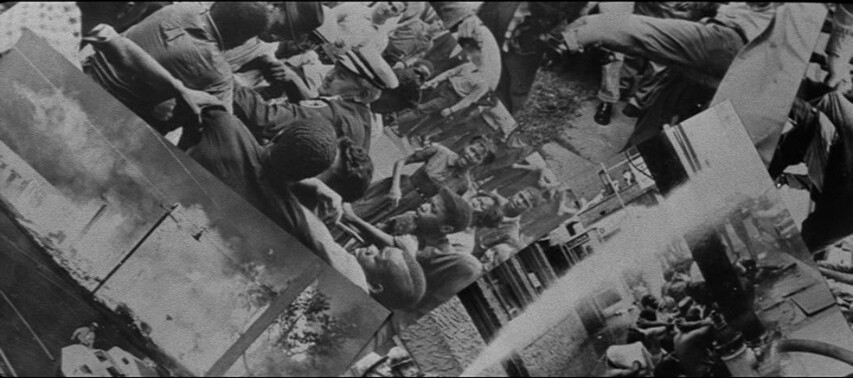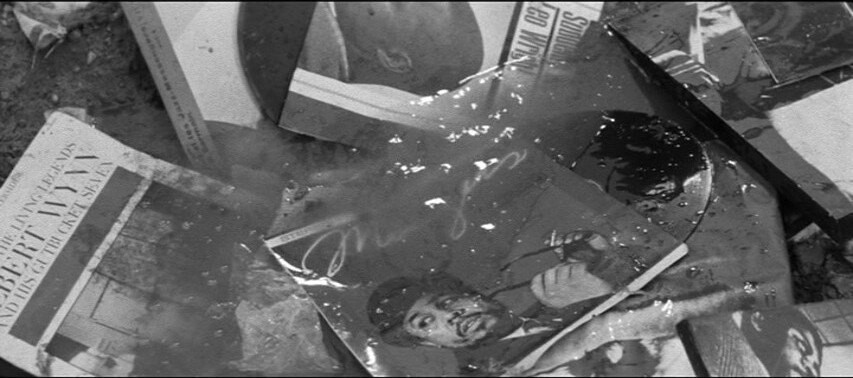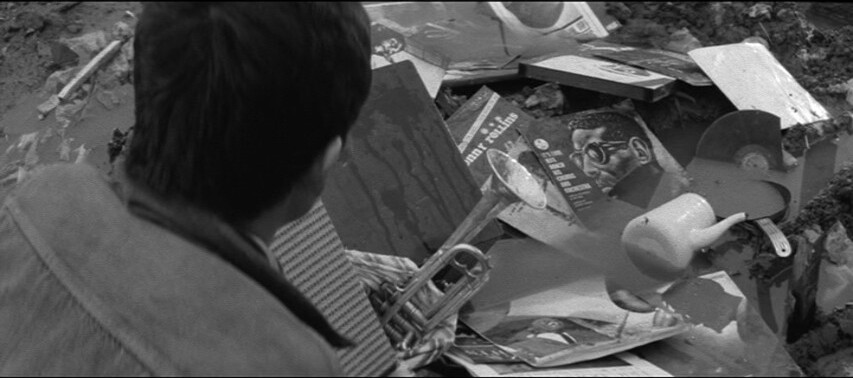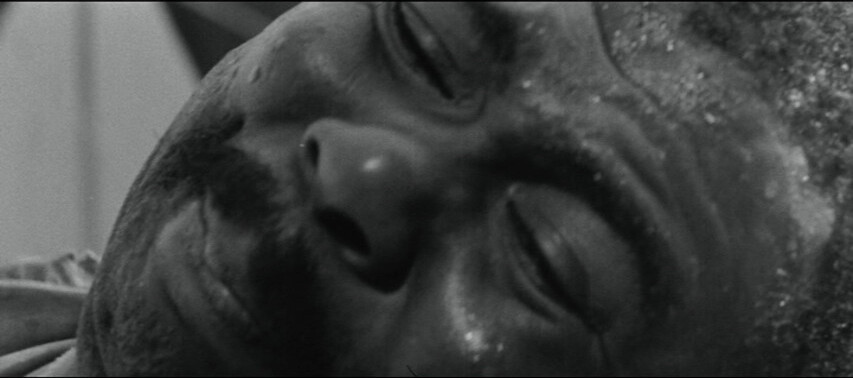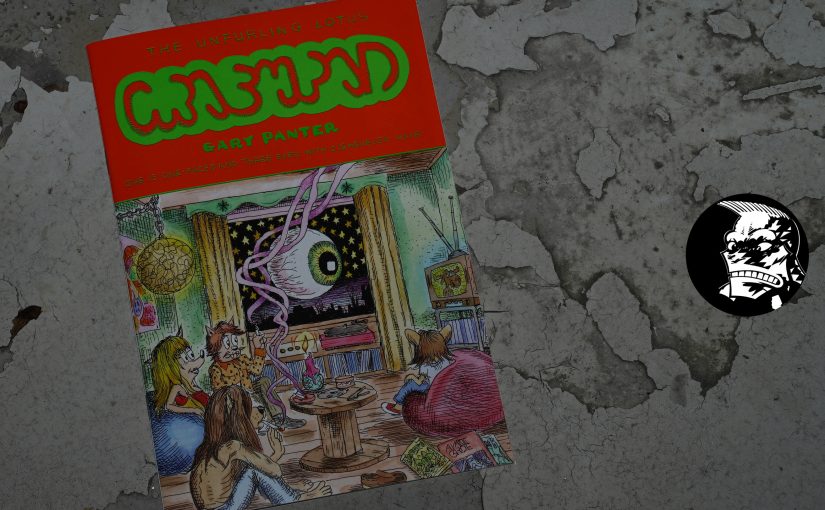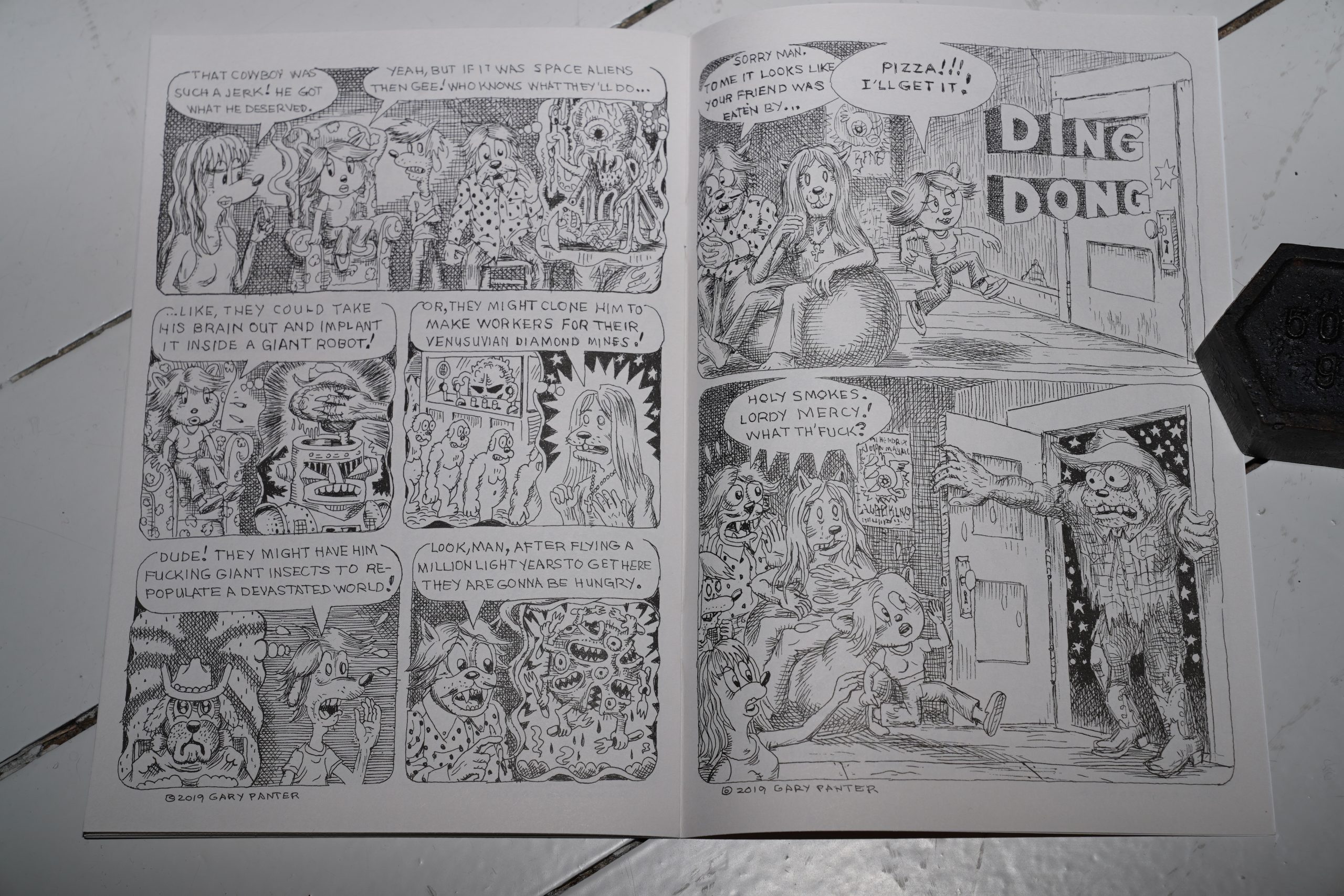

Brrr! It’s cold outside!

But I’ve got chawklits and a whole bunch of comics that arrived yesterday, so I think I’ll spend the day on the couch.
| June Tabor: Ashore |  |

12:36: Otherworld Barbara 1 by Moto Hagio (Fantagraphics)

Wow, this is really something. We’re dumped straight into this group of people living in an apparently strange world with no explanation. And it feels so right: It’s kinda like watching a 50s melodrama? But with more mystery.
I’ve never been so bewildered in my life and I love it.
| Various: Make More Noise (1) |  |

It straightens out somewhat after a while, and everything’s explained… but for once, the explanations doesn’t puncture the excitement: The oddities keep coming, and things connect in ominous and interesting ways. It’s fabulous.

I’m not sure about the translation, though — “Why don’t you get lost?”, for instance. And sometimes it seems like the speech bubbles are arranged to be read from left to right, but makes things most confusing, but perhaps they were that way originally, too?
Anyway, it’s really fun and thrilling, but exhausting to read.
| Richard and Linda Thompson: Hard Luck Stories (1): Sometimes it Happens |  |

14:49: Love and Rockets #11 by Gilbert & Jaime Hernandez (Fantagraphics)
It’s always an event when a new issue of Love and Rockets appears, as if by magic.

Jaime takes the Tonta saga one little step further, and it’s cute…

And Gilbert keeps on filling in Fritz’ past. At this point, I’m not sure what his plan is here — I think he may have piled on so much stuff now that the Fritz storyline has already sunk.
I mean, I’ll always like his work, but it’s like — I used to obsess about making connections between things in his stories, and now I’m more like *lifts eyebrow*?
| Various: Twenty Years of Prohibited Records: Curiosities |  |

15:20: Good Boy! Magazine edited by Michael Sweater and Benji Nate (Silver Sprocket)
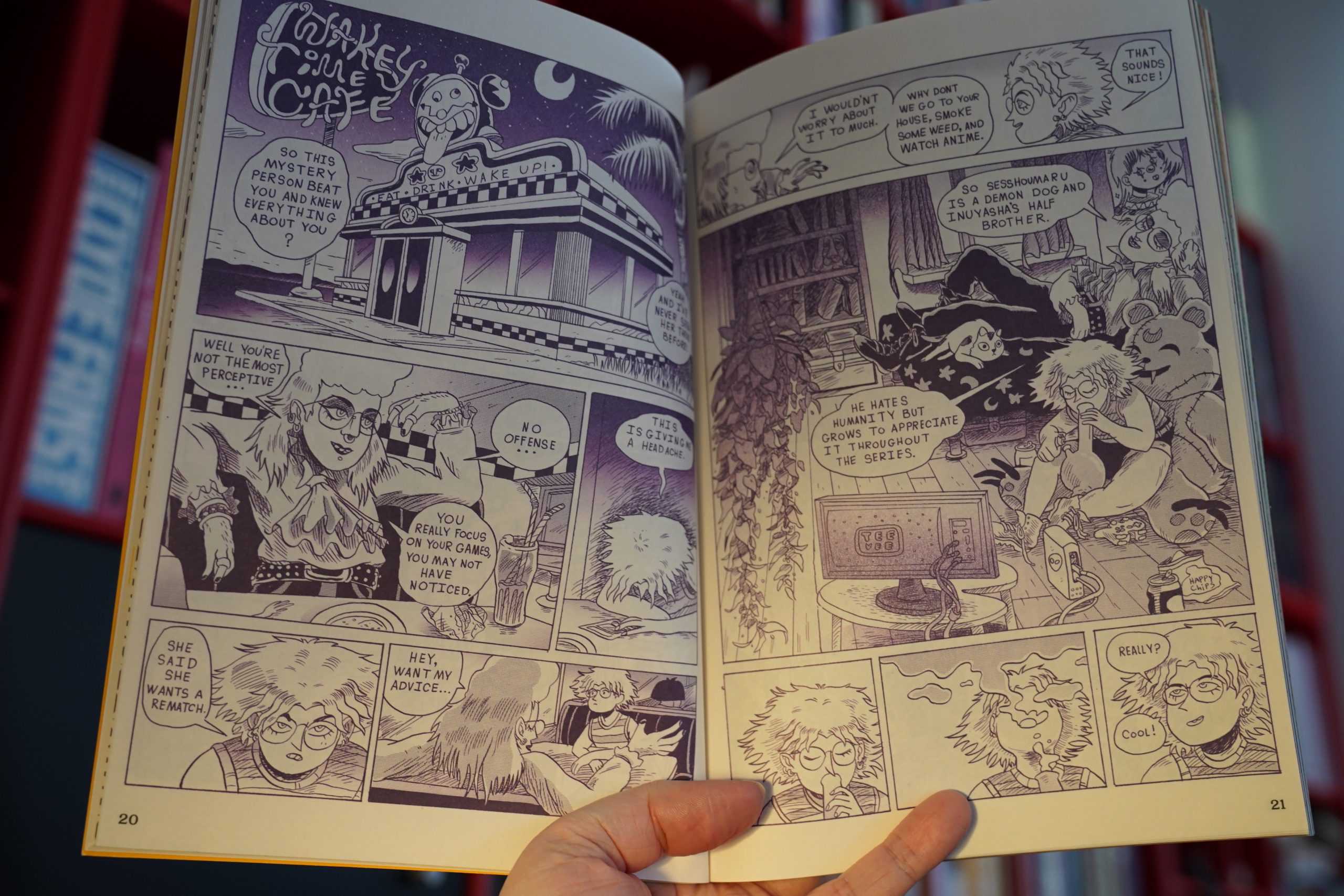
This is so not my thing.

Almost all the strips here seem to have a unified aesthetic? I kind of… I don’t even know… a Post Adventure Time thing? Video games and smoking pot? The above thing (by Sean Mac) was the only thing that even halfway worked for me.

15:41: The Adventures of Nib and Borba by Chaia Startz
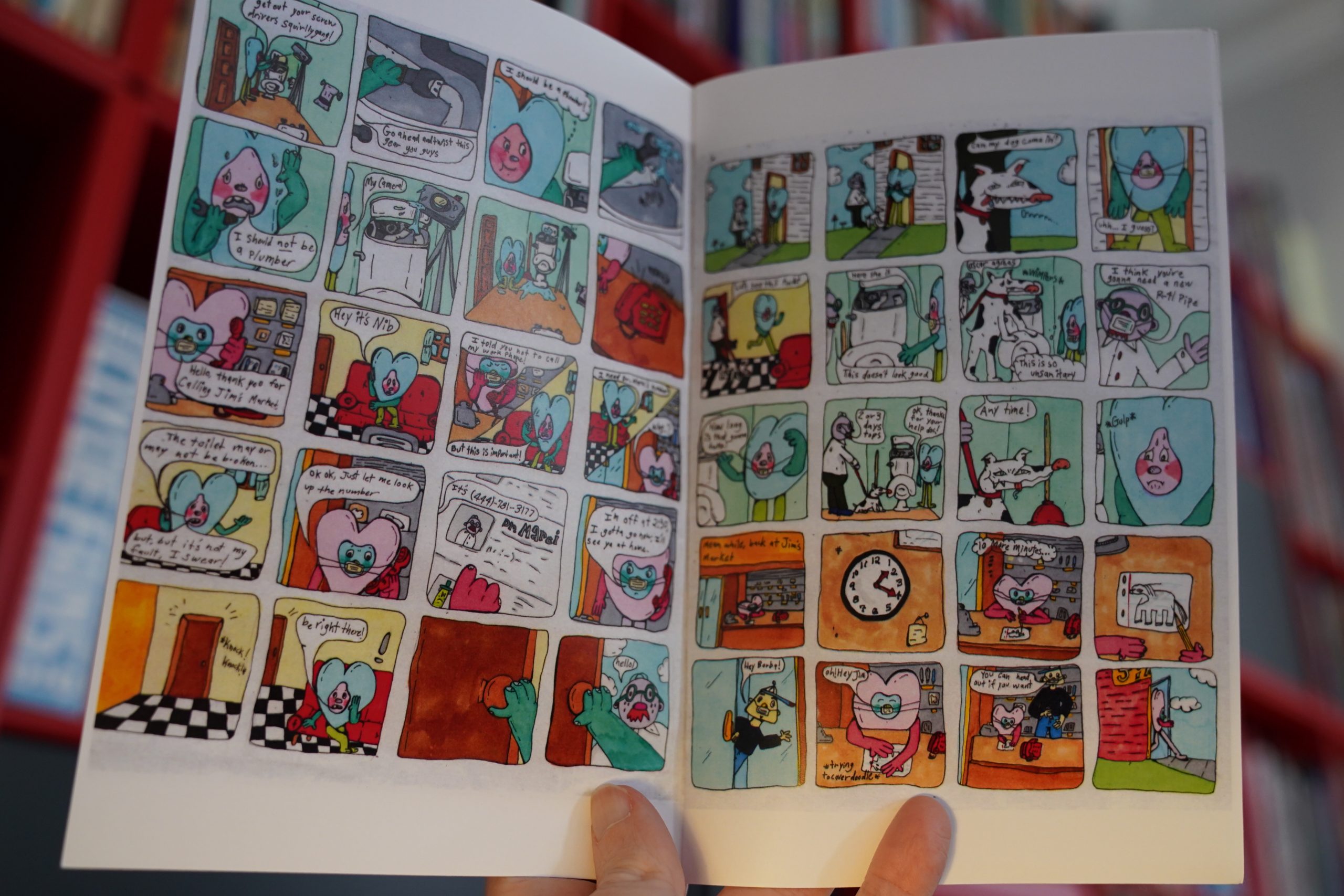
It’s funny and weird. I like it.
16:01: Errands
Oops. Gotta run some errands.
| Split: Jenhitt, So Low |  |

16:27: Our Little Secret by Emily Carrongton (Drawn & Quarterly)
Well, this looks… ominous…
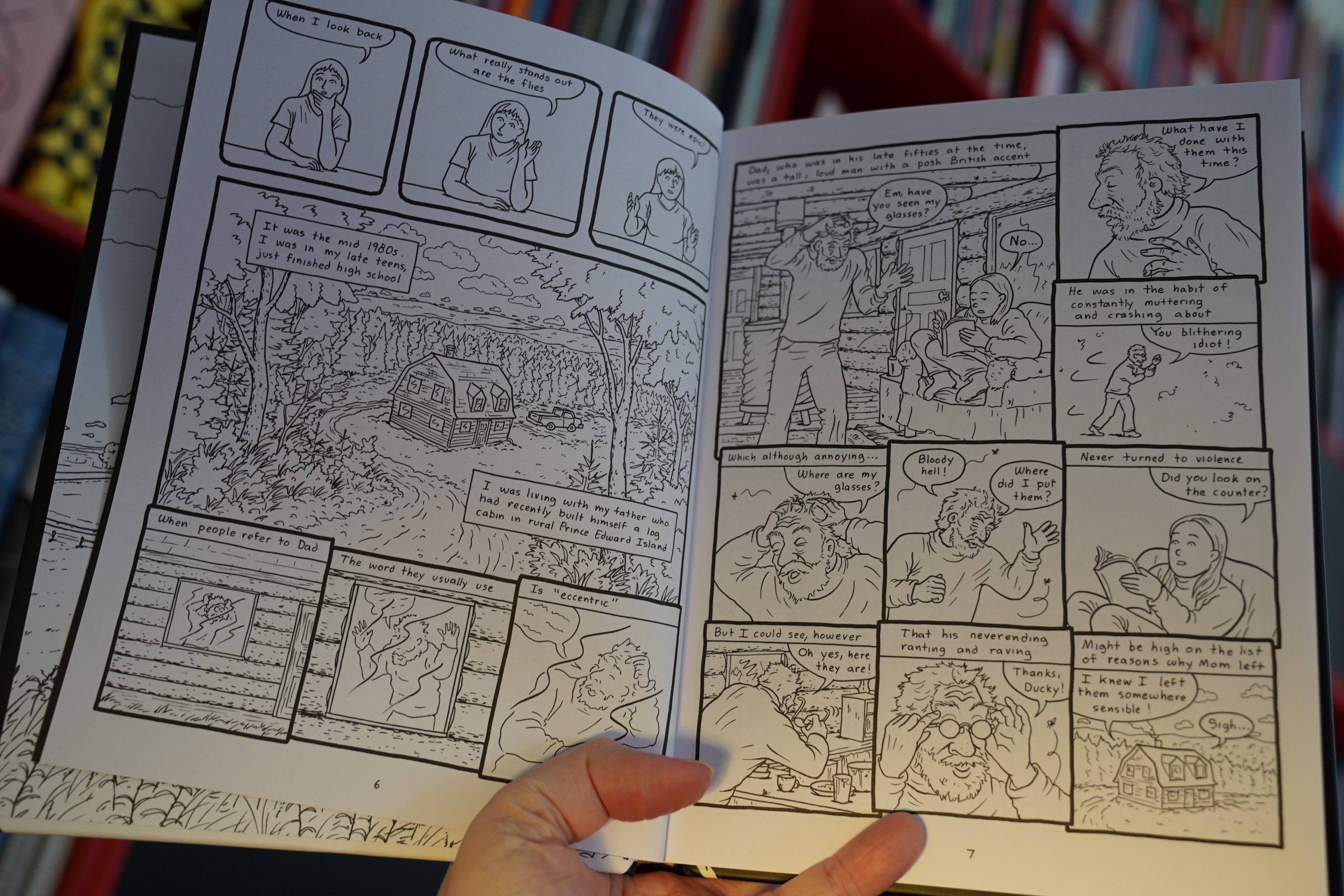
Interesting artwork — it sort of reminds me of Keiler Roberts in a way? The thin lines without much variation in weight. But with way more details.
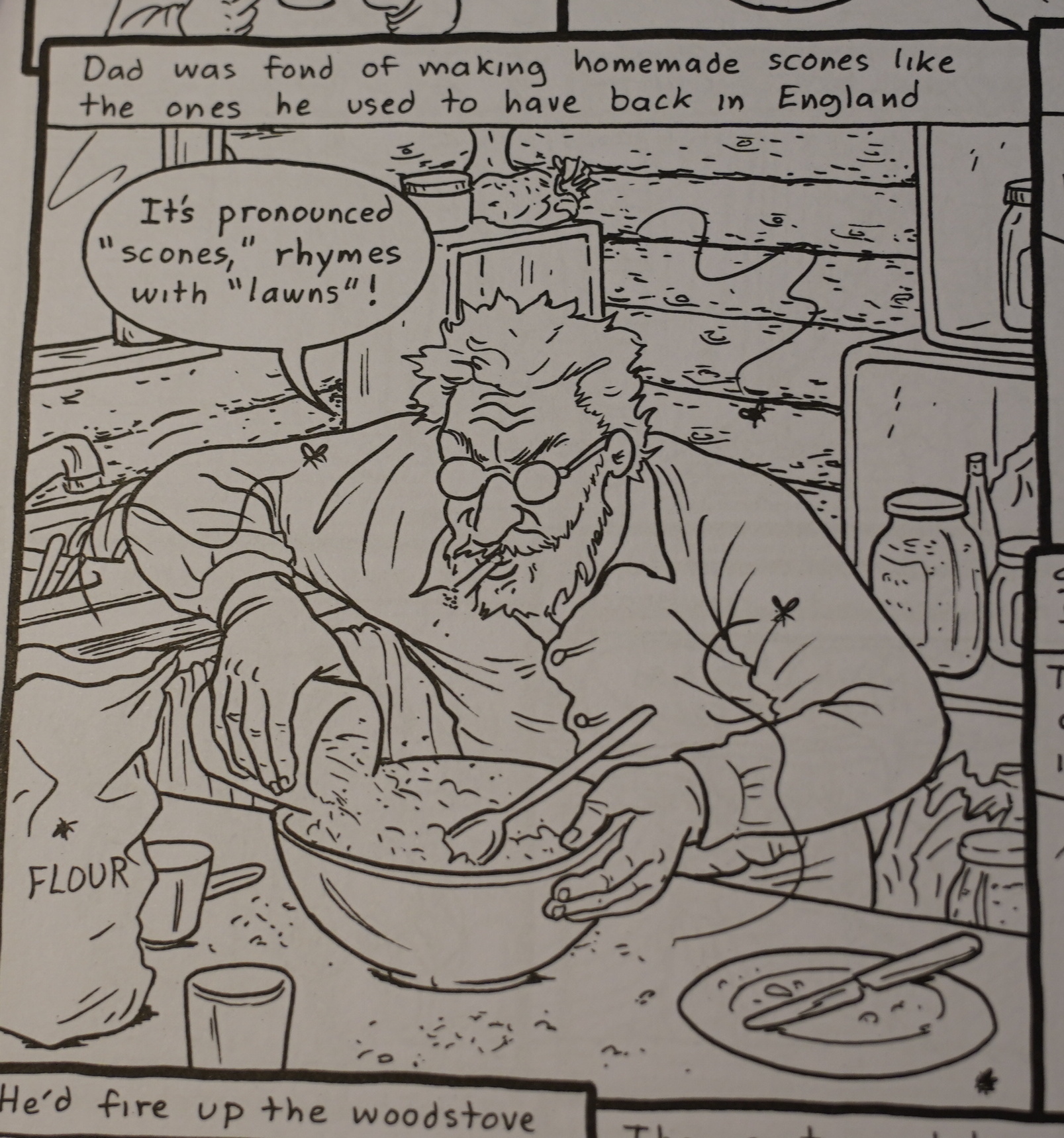
Err… excuse me?


Those words don’t rhyme in English! Unless he’s saying — /skɔːn/? Well, I guess it’s possible they say it that way in some dialect…
Or is he saying /ləʊn/?
The mysteries are already piling up!
| Sam Amidon: Fatal Flower Garden EP |  |
Can you tell I’m just procrastinating because I don’t want to read this book? It’s going to be a horrible ordeal? I know, I bought it myself, but I basically just buy everything Drawn & Quarterly publishes.
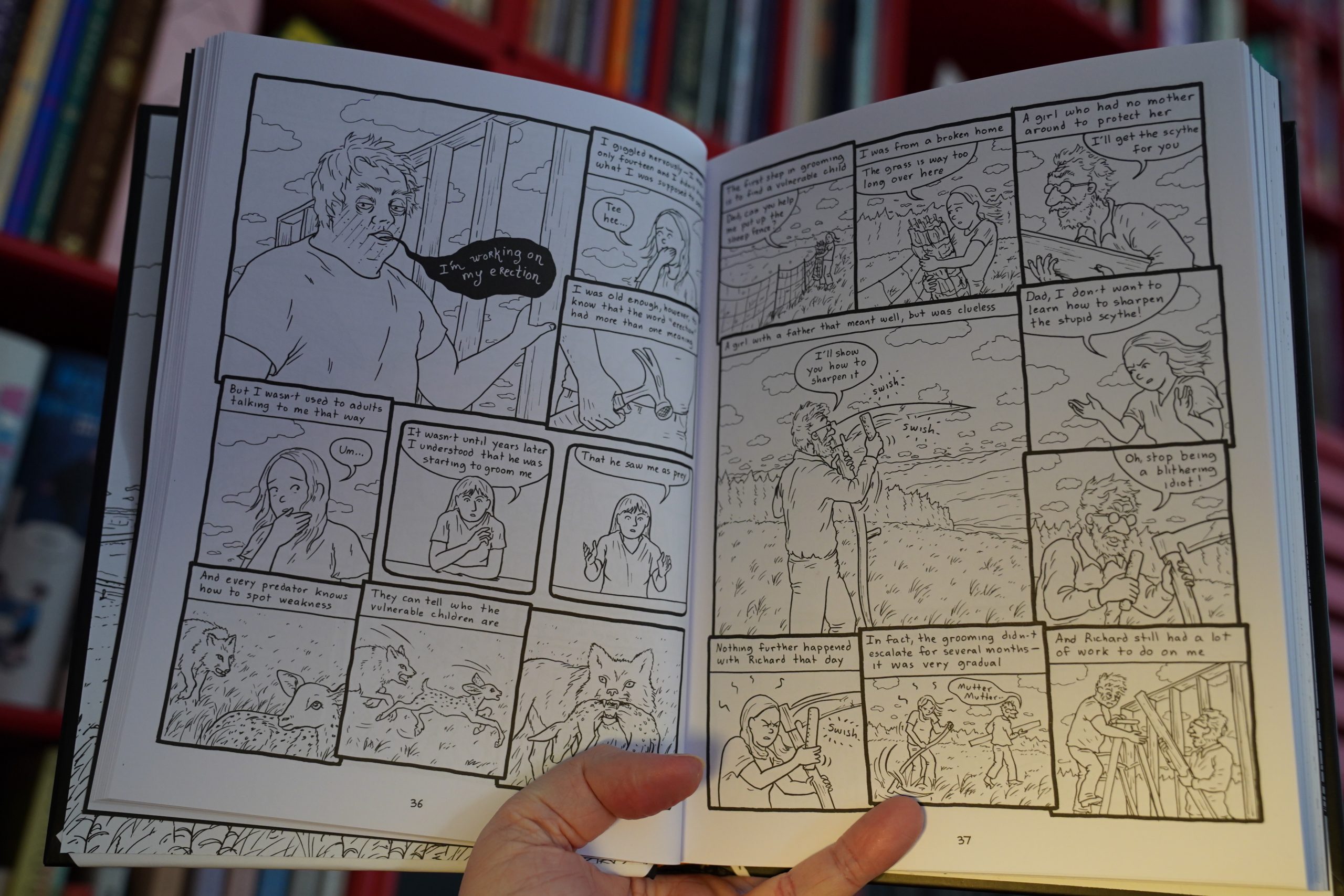
And it’s… it’s the most horrifyingly gruesome book ever. Carrington is a really talented storyteller.
| Time is a Mountain: II |  |

17:33: Red Room: Trigger Warnings #1 by Ed Piskor (Fantagraphics)
This, on the other hand, is shit.
| Time is a Mountain: II |  |

17:35: Quiet Thoughts by Karen Shangguan (Avery Hill)

This is very soothing. Tranquil. I feel I needed that after that Carrington book.

I love the artwork. Both geometric and very organic.
| Ass: 4 |  |

17:47: The Forest by Thomas Ott (Fantagraphics)

Very brief, but striking book.
| Ass: 4 | 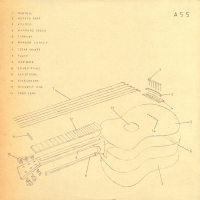 |

17:55: Aya: Life in Yop City by Marguerite Abouet & Clément Oubrierie (Drawn & Quarterly)
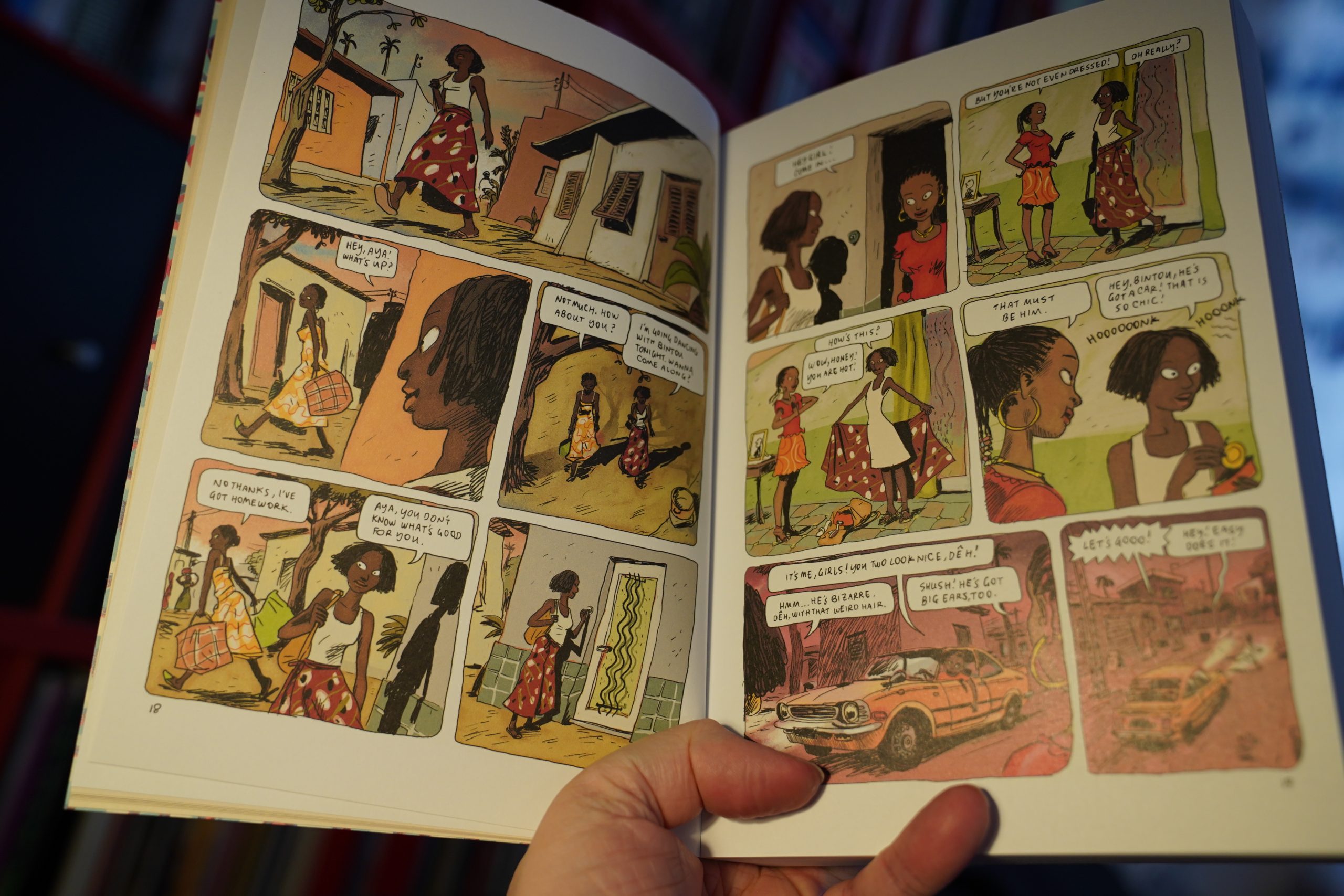
Hey… I’m pretty sure I’ve read this before? Hm… Ah! It was published as three separate books a decade ago? I probably read those back then, and I bought this by mistake, thinking it was a new book?
Sounds like something I’d do.
I think I’ll just re-read it anyway, then.
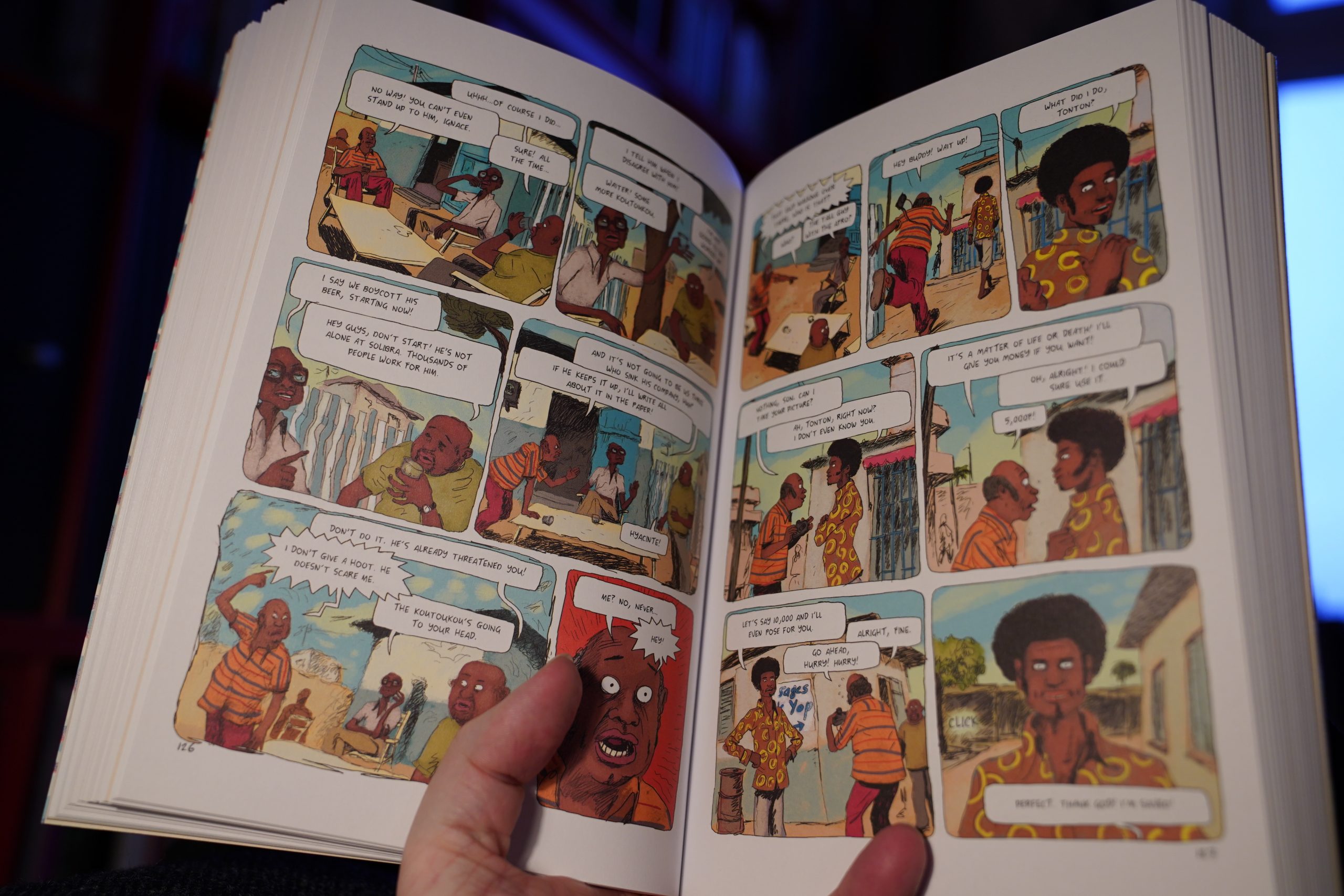
This is as soothing as I remember it. It’s got very French pacing — like one of those light-hearted sorta-romantic sorta-wistful comedies they do so well. And beautiful artwork and colouring.
*pause for dinner*
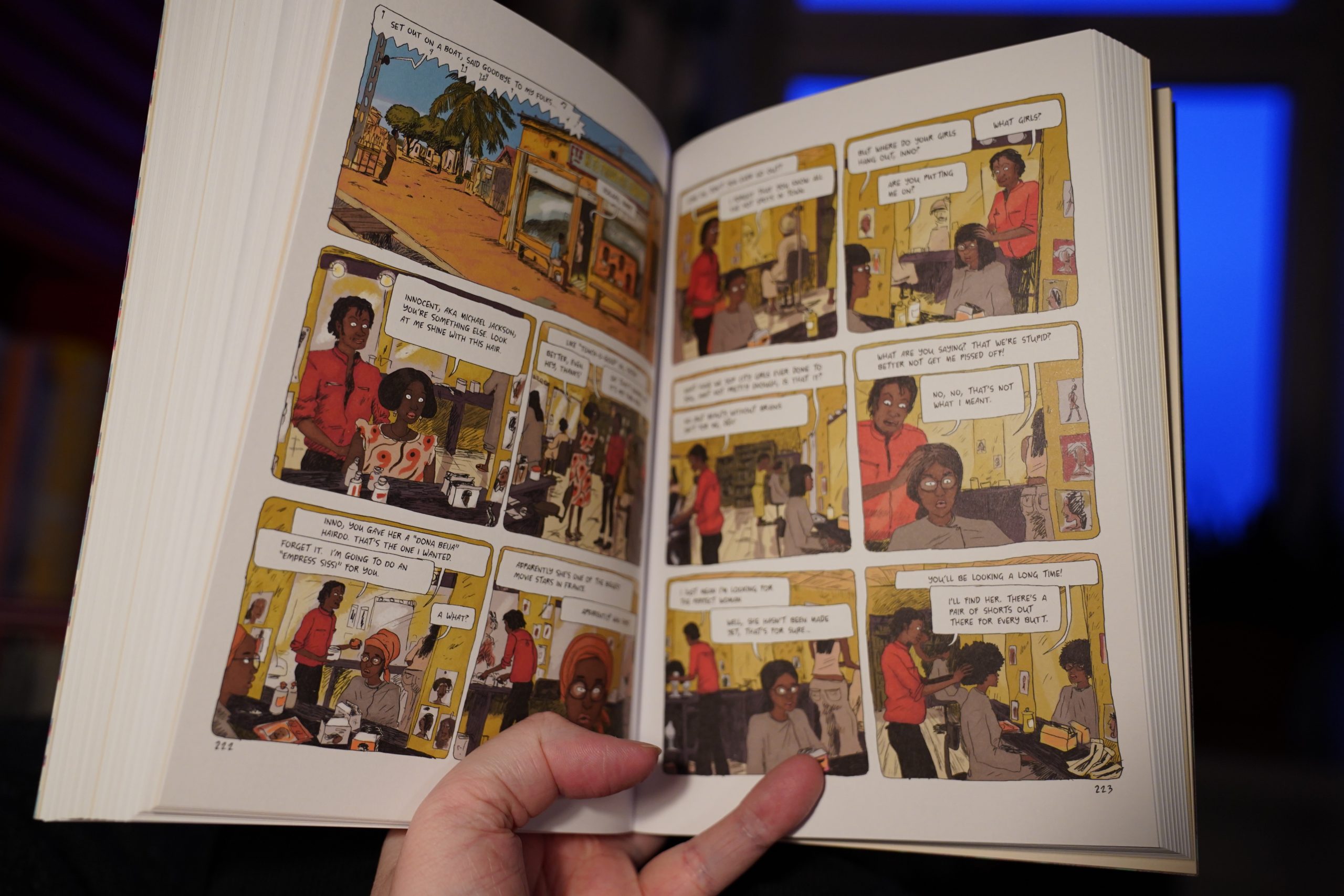
But it doesn’t read as well in this collected edition as I remember. It was great getting a hundred pages of this storyline a year — but reading it all in one go like this, I was starting to get a bit antsy towards the end.
Most gigantic collections of French comics have this problem: French comics are (in general) pretty compressed, and are meant as complete experiences when read album by album. I didn’t think that this one would have that problem, since it’s so soap opera-like, but it really does.
| Coil: Sara Dale’s Sensual Massage |  |

21:38: Chrz by Stefan J M van Dinther (Bries)

This is really cool. I first thought it was more of an abstract comic, but it’s got a pretty clear narrative.
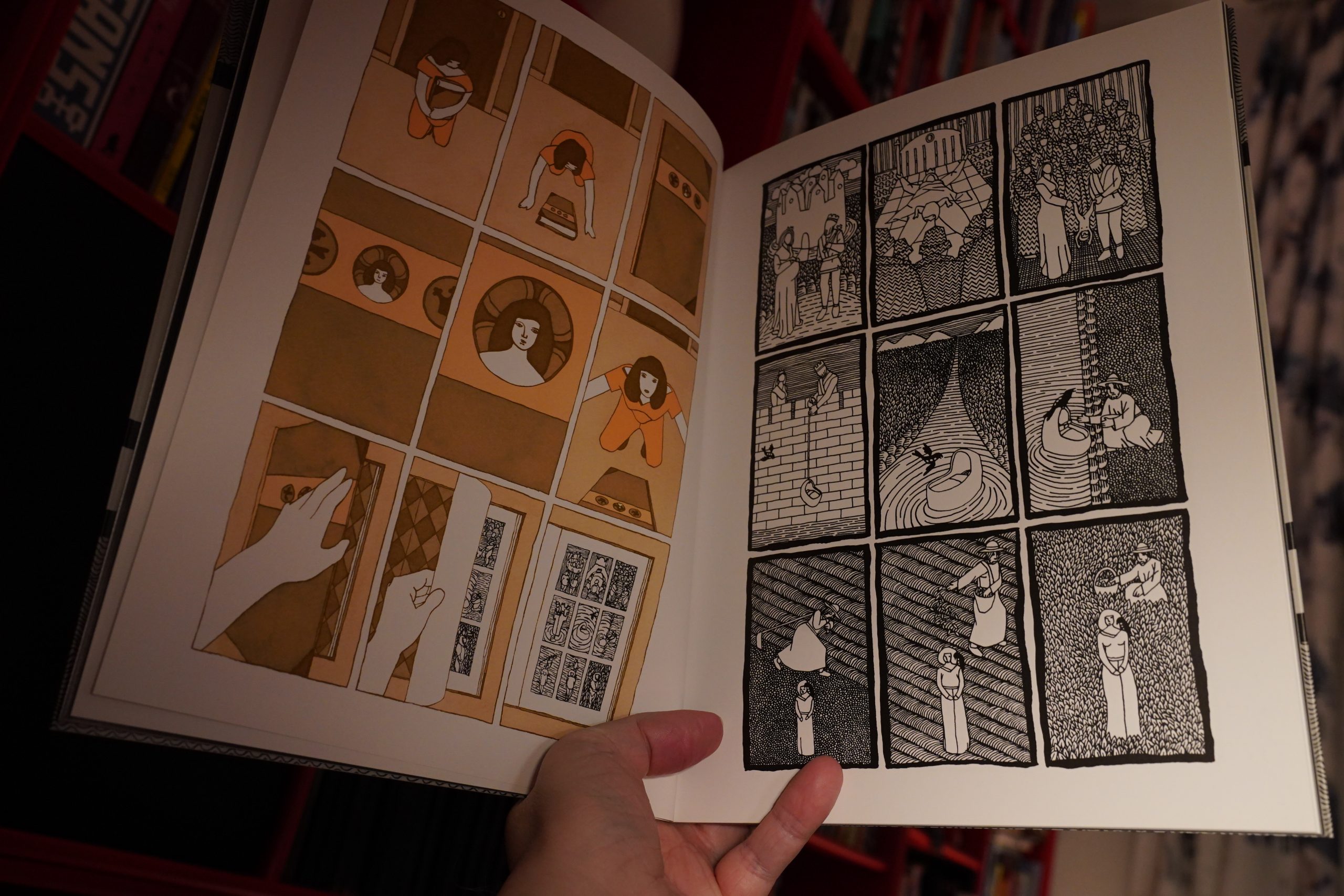
Well. Clear-ish.
Very good.

21:48: Weeding by Geneviève Lebleu (Conundrum Press)
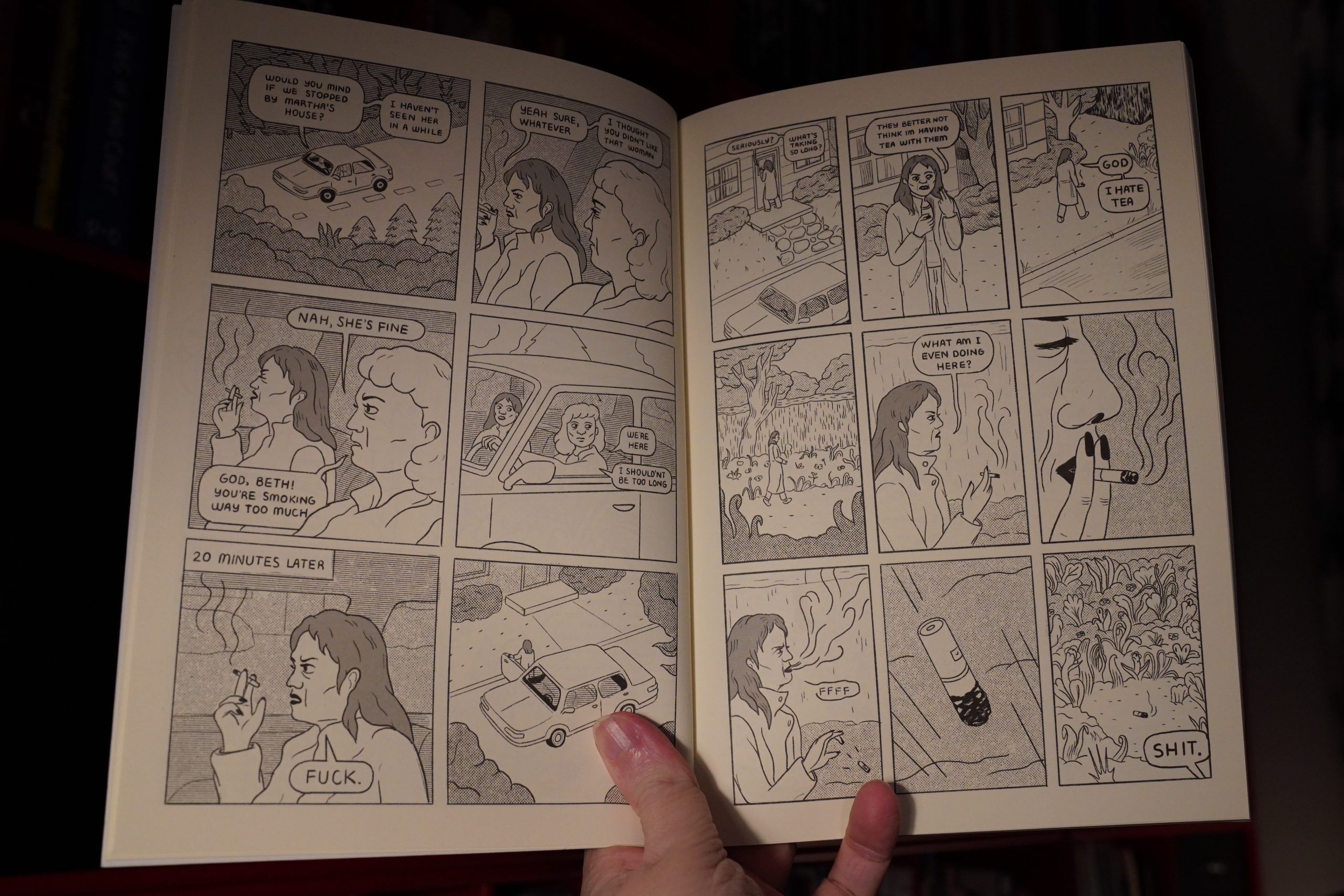
This starts off as an apparent relationship drama kind of thing, and then veers off into (quite effective) horror. Or… DOES IT!!?!? Dunn dunn dunn
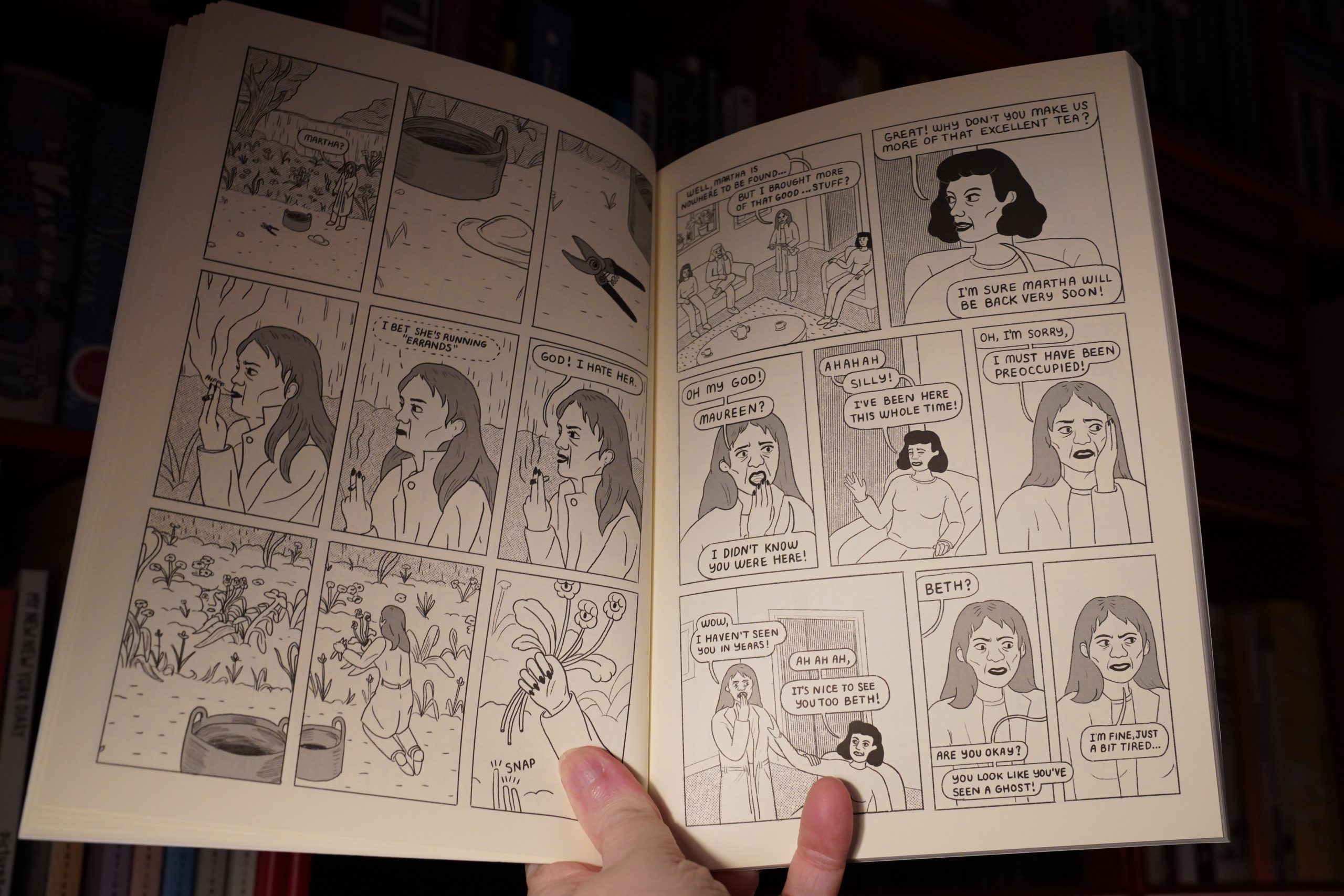
I guess it’s a kind of post-de Forge comic book (with a slight video game feel to some of the bits). It’s pretty good, but my main problem was that I just couldn’t tell the characters apart, and there’s only like five of them.
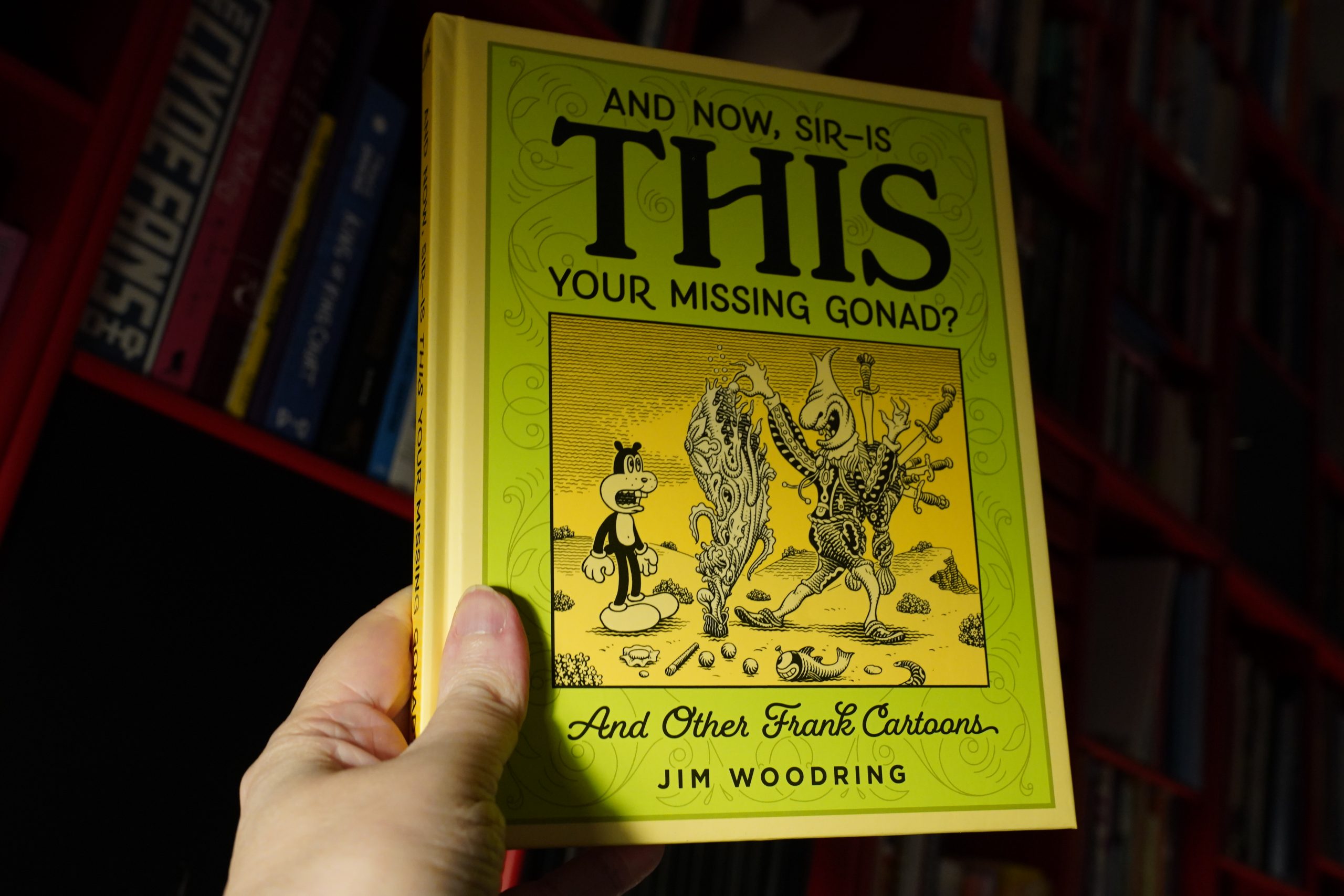
22:09: And Now, Sir — Is This Your Missing Gonad? by Jim Woodring (Fantagraphics)
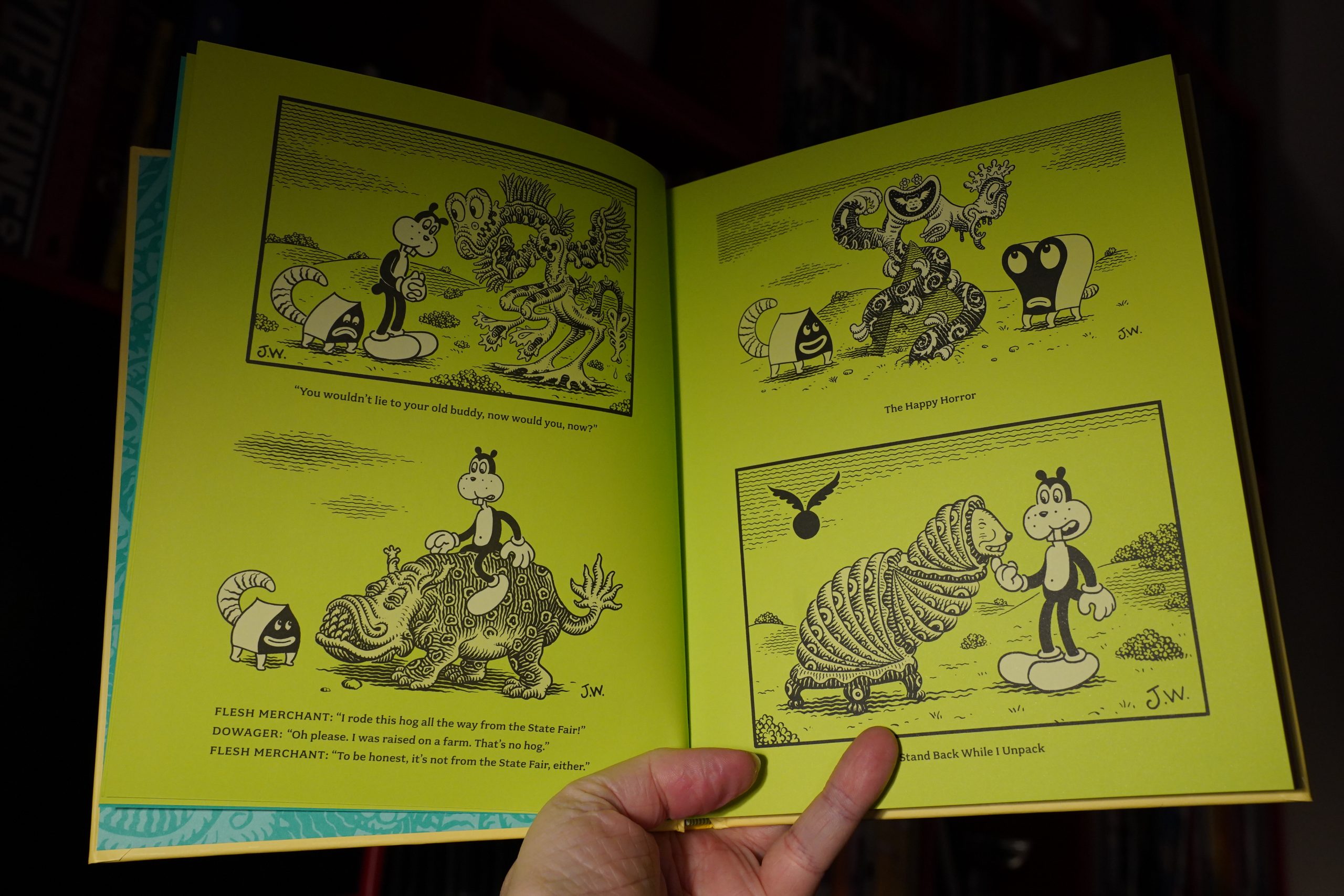
Hm… I love Jim Woodring, but this really reads like he’s done a whole bunch of spot illustrations (for whatever purpose) and then decided to collect them in a book. And jotted down some accompanying texts.

It just doesn’t build to anything, and while the artwork is pretty nice, not even that is up to his usual amazing standards. It’s a disappointing book.
But I guess any Woodring is better than no Woodring.
| Coil: Sara Dale’s Sensual Massage |  |

22:23: Bat Kid by Inoue Kazuo (Bubbles Zine Publications)
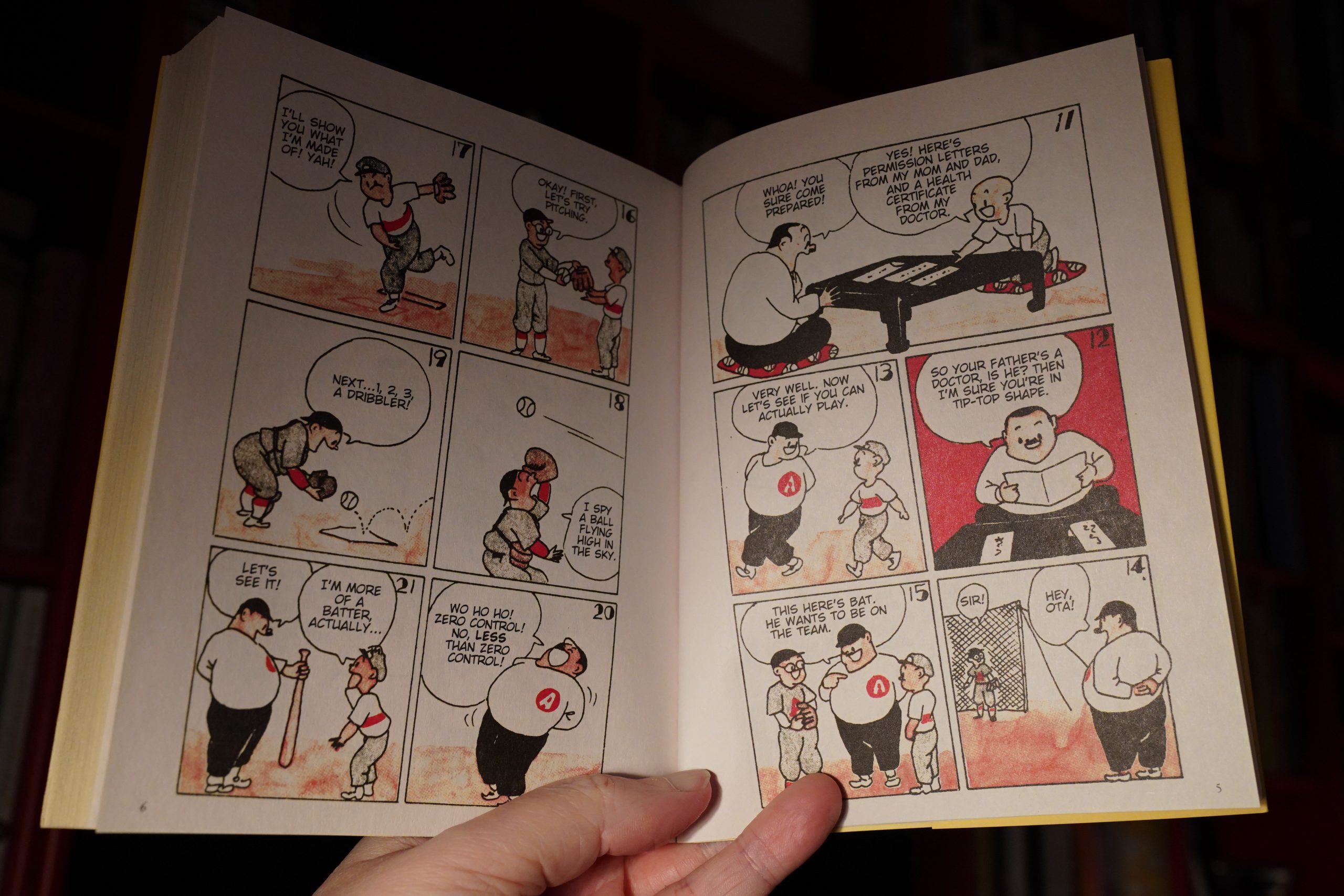
I guess this was a historically important Japanese sports comic strip? If I had read Ryan Holmberg’s 60 page essay, I’d probably know for sure, but I’m not going to do that, so I have only the 80 pages of strips reprinted here to go by, as well as a couple of dozen “activities pages” and quizzes. (About a decade and a half ago, I was reading somebody who was writing about comics, and they said “you know, I read more about comics now than I read actual comics” and then all the comments on that article said “right? me too!” and I realised that that was true for me, too, and I was horrified. And I decided to change my ways, because I love reading comics, and reading writing about comics cuts into my comics reading time. So I never read those things any more, but I’m sure it’s a lovely essay.)
The ratio is so lopsided that the book seems more like a vehicle for the essay than anything else.

But this comic is really tedious. I’m totally down with reading sports comics, but this just isn’t very good.
Even as a historical artefact.
The book itself is very nice, though (as a physical object).
| Eric Malmberg: Den gåtfulla människan |  |

22:44: XIII Mystery 2: Irina by P. Berthet & Corbeyran (Cinebook)
I’ve read (at most) just a couple of the Van Hamme XIII albums, so I’m not sure why I bought this spin-off book.

Cinebook have done their usual indifferent production work, I see…
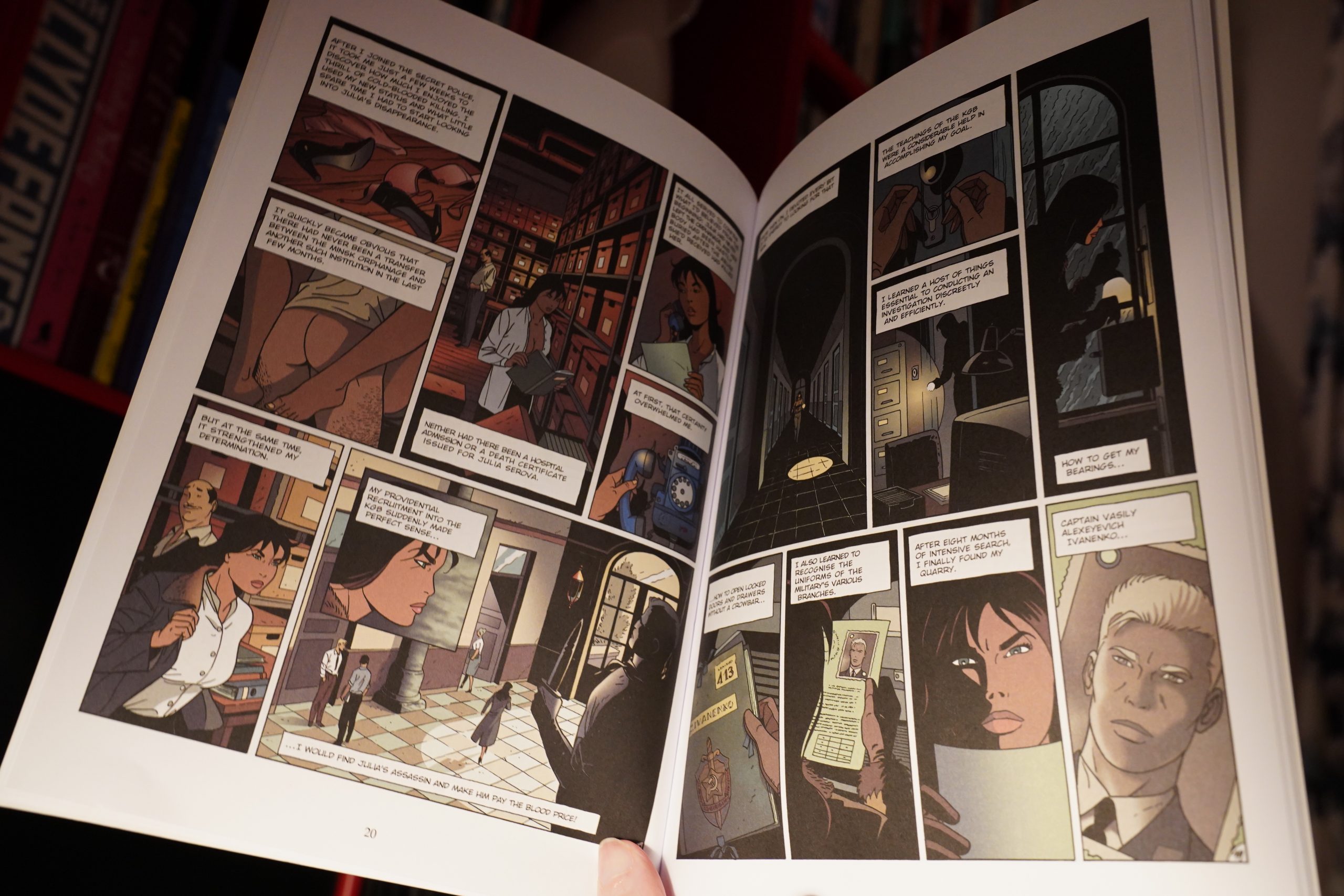
… and this is might be the most inept French(ey) album I’ve read in quite a while. And that says a lot. I ditched it halfway through, and they were still in the recap/exposition part of the album.
And the artwork sucks, too.

23:02: Headland by Kate Schneider (Fantagraphics)
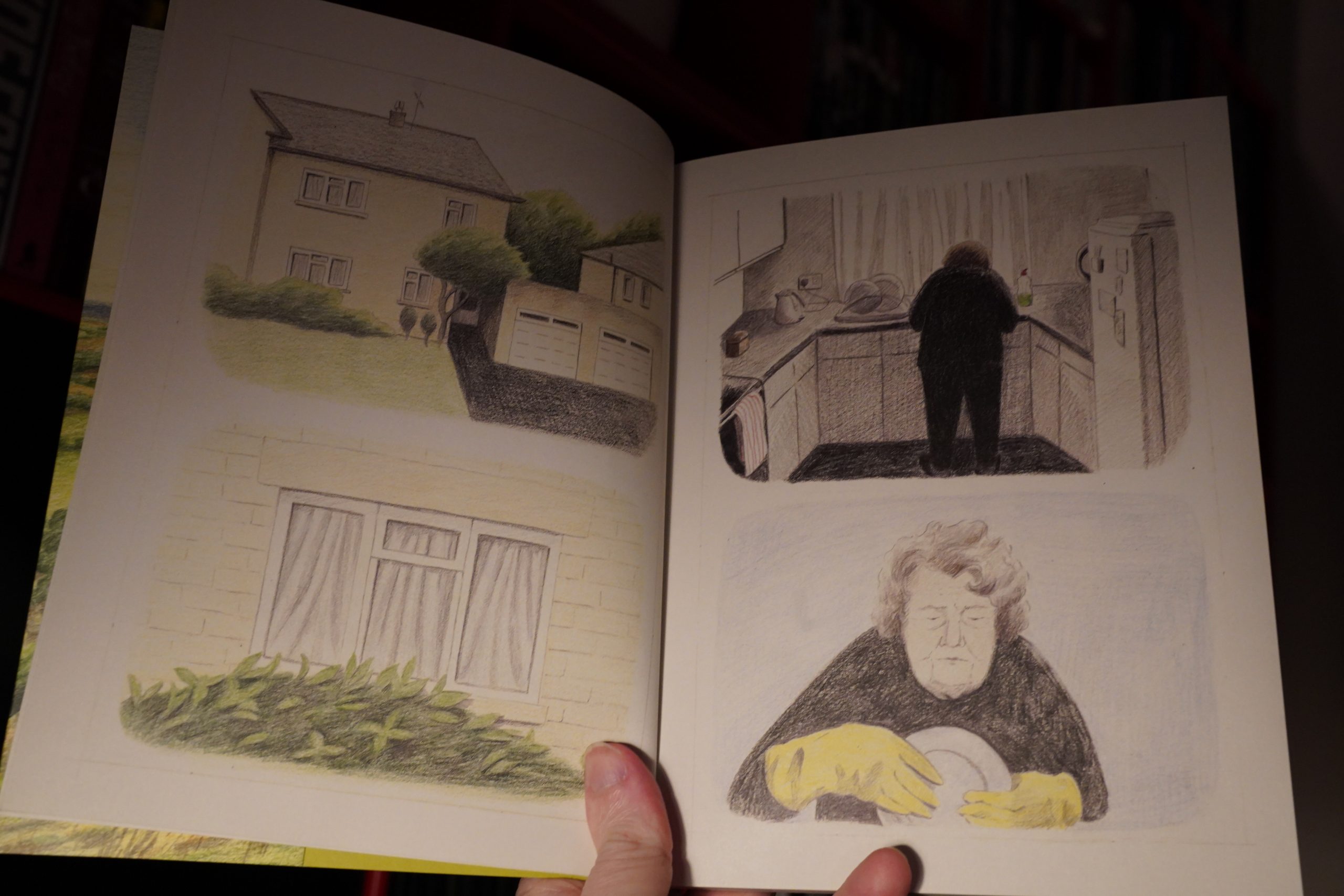
This is a lovely book. Just lovely — great artwork, fantastic pacing, and quite surprising.

The only jarring thing about the book is the way that it drops us right onto some text pages that explain to us, in the most dreary language possible, what we’ve just read.
Whyyyyy
But I mean, you shouldn’t let that stop you from buying it. I just suggest that before you start reading the book, rip the last few pages out and burn them, so that you don’t accidentally read them while reading the book itself.
I mean, rip them out and store them in a safe place.
23:13: The End
I’m totally exhausted by all this comics reading, so I think I’ll go out on a high point and call it a night.
Team Comics out!





